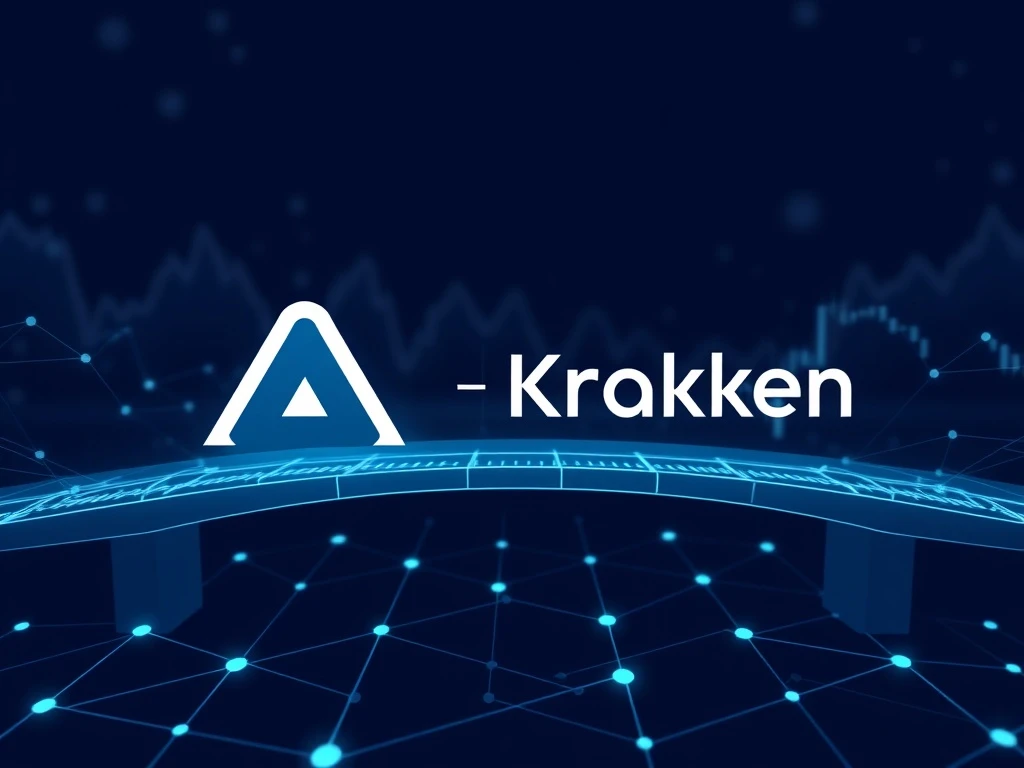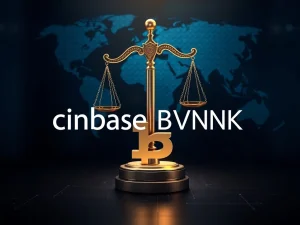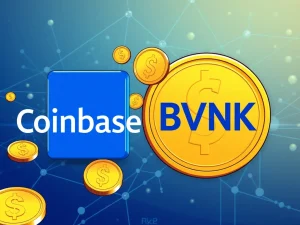Aave Lending: Strategic Move to Launch Centralized Service on Kraken’s Ink Blockchain Unlocks New Opportunities

A significant shift is underway in the world of decentralized finance (DeFi), signaling a pivotal moment for one of its giants. Aave, a leading DeFi lending protocol, is poised to make a bold move into the realm of centralized finance (CeFi). Its community has overwhelmingly approved a proposal to license a centralized version of its lending protocol for deployment on Kraken’s new Ink blockchain. This strategic decision aims to bridge the gap between DeFi innovation and institutional adoption, potentially reshaping the landscape of Aave Lending and beyond.
A New Chapter for Aave Lending: Bridging DeFi and Institutions
The journey for this ambitious integration began with an Aave Request for Comment (ARFC), a preliminary off-chain vote designed to gauge community sentiment. The response was clear and decisive: an astounding 99.8% of votes cast were in favor of licensing a whitelabel version of Aave v3 for the Ink Foundation, the organization behind the Ink blockchain. This resounding approval paves the way for the next crucial phase: drafting an Aave Improvement Proposal (AIP) for an on-chain vote.
The core motivation behind this move is straightforward yet impactful: “By granting a license to deploy a centralized version of the Aave codebase, Aave can expand its technology adoption while creating new revenue streams.” This initiative represents a conscious effort by the Aave community to extend its influence beyond the purely decentralized sphere, embracing a hybrid model that caters to a broader range of participants, particularly institutions seeking compliant and scalable solutions for Aave Lending.
Understanding the Kraken Ink Blockchain: A Hub for Compliant Finance
Central to this partnership is Kraken’s recently unveiled Ink blockchain. Announced in October and launched in late 2024, Ink is not just another blockchain. It is specifically designed as a compliant layer-2 platform tailored for tokenized assets and institutional DeFi. This focus on regulatory adherence and enterprise-grade infrastructure makes Ink an ideal partner for Aave’s foray into centralized services.
The Kraken Ink Blockchain aims to address the common concerns of traditional financial institutions regarding security, compliance, and scalability within the crypto space. By offering a regulated environment, it seeks to facilitate the seamless integration of real-world assets (RWAs) and traditional financial products onto the blockchain, thereby unlocking massive potential for institutional engagement in the digital asset economy.
The Rise of Institutional DeFi: Why Centralized Crypto Lending Matters
Why are we seeing established DeFi protocols like Aave venture into centralized models? The answer lies in the evolving needs of the market, particularly the burgeoning interest from traditional financial institutions. While DeFi offers unparalleled transparency and permissionless access, its decentralized nature can present challenges for entities bound by stringent regulatory frameworks.
This collaboration with Kraken Ink represents a strategic pivot towards Institutional DeFi. It acknowledges that for significant capital from traditional finance to flow into the crypto ecosystem, a bridge providing compliance, robust Know Your Customer (KYC) and Anti-Money Laundering (AML) checks, and a familiar operational framework is often necessary. The development of a whitelabel, centralized Aave v3 instance on Ink directly addresses these requirements, positioning Aave at the forefront of this hybrid evolution. This move is a testament to the growing demand for secure, compliant Centralized Crypto Lending solutions that can onboard large-scale capital.
Benefits and Beyond: What This Means for the Aave Protocol
The partnership promises substantial benefits for the Aave Protocol and its decentralized autonomous organization (DAO). The proposal highlights a significant opportunity for Aave to expand its footprint in the institutional lending market, leading to new and diversified revenue streams. Specifically, the Aave DAO stands to receive a share “greater than or equal to the equivalent of a Reserve Factor of 5% based on borrow volume in all pools” on the Ink instance.
Furthermore, the Ink Foundation has demonstrated its commitment by pledging substantial incentives to bootstrap the new protocol. This includes multiple liquidity mining programs, which are projected to bring over $250 million in early supply to the instance. Such a substantial commitment underscores the potential scale and impact of this collaboration, promising to bolster the Aave ecosystem significantly.
While Aave has shown positive growth, reaching a total value locked (TVL) of $40.3 billion in mid-May, recent data from DefiLlama indicates a dip to approximately $33.5 billion, placing it second behind liquid staking platform Lido. This strategic expansion into institutional Centralized Crypto Lending could provide a new growth vector, helping to solidify Aave’s market position and diversify its revenue sources beyond its existing DeFi operations.
Looking Ahead: The Future of Hybrid Lending Models
Aave’s move to deploy a centralized version of its protocol on Kraken’s Ink blockchain is more than just a partnership; it’s a blueprint for the future of crypto finance. It signifies a growing trend where the innovative power of DeFi protocols converges with the regulatory compliance and institutional reach of traditional finance. This hybrid approach, combining elements of decentralized governance with centralized execution, could unlock unprecedented levels of capital and participation from institutional players who have, until now, remained on the sidelines.
This initiative not only expands the reach of the Aave Protocol but also sets a precedent for how established DeFi projects can evolve to meet the demands of a maturing market. As the lines between CeFi and DeFi continue to blur, such strategic alliances will likely become more common, paving the way for a more integrated, efficient, and accessible global financial system. The success of this venture on the Kraken Ink Blockchain will be closely watched, as it holds the potential to redefine what’s possible in digital asset lending.







